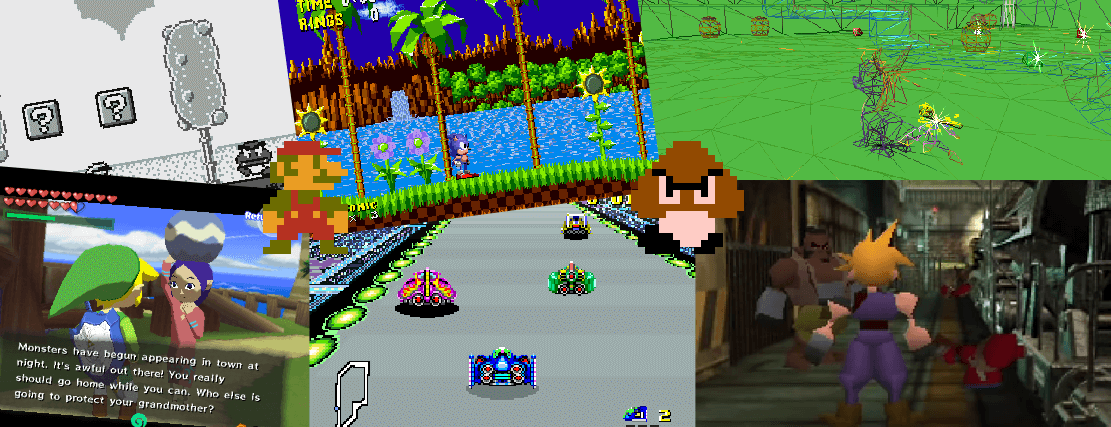
Languages available: 🇬🇧 - English, 🇭🇺 - Magyar, 🇩🇪 - Deutsch, 🇵🇱 - Polski, 🇨🇿 - Čeština, 🇩🇰 - Dansk, 🏴 - Galego, 🇪🇸 - Español, 🇧🇷 - Português (Brasil), 🇮🇩 - Bahasa Indonesia, 🇹🇷 - Türkçe, 🇫🇷 - Français, 🇮🇹 - Italiano, 🇷🇺 - Русский, 🇺🇦 - Українська, 🇦🇪 - اَلْعَرَبِيَّةُ, 🇯🇵 - 日本語, 🇨🇳 - 简体字, 🇹🇼 - 正體字, 🇰🇷 - 한국어, 👋 - Add translation

Looking at the evolution of video game consoles is fascinating. While conventional PCs tend to evolve ‘incrementally’, new generations of consoles introduce completely new ways of working. What you see here is a series of articles aimed at uncovering the rationale behind the latest trends in technology. They will also demonstrate why each system can’t be summarised by its ‘bits’, megahertz, amount of RAM and whatnot.
This is not a developer manual, just an in-depth introduction to how each system works internally. Bear in mind that tech has gotten really complicated lately, so if you struggle to follow my latest articles, try reading the early ones first. They introduce many concepts and definitions that are constantly revisited.
Basic knowledge of computing is preferable, however, I try really hard to adapt my content for wider audiences, so please don’t be afraid to give it a try! But if that’s not enough, you may want to look at the supporting readings.
While I try to be as accurate as possible, if you find any mistakes please give me a shout. Finally, if you prefer reading offline, check out the multiple book editions.
Without further ado, here they are!
Known as '8-bit' consoles, these machines brought more sophisticated graphics and richer sounds than their predecessors. After all, a big market crash just occurred and newer standards had to be set.
Outstanding GPU features: Scrollable tile maps and larger colour palettes.
DMA, horizontal interrupts, multiple modes... These are some examples of the new concepts that brought the new '16-bit' generation, opening the door to new genres of games.
Notable CPU advancements: Multiplication and division instructions, DMA and dual-processing.
Outstanding GPU features: Affine transformations and horizontal interrupts.
3D gaming has become a need but 'how' is not clear yet. The response? Every company presented their own different vision.
Notable CPU advancements: Pipelined datapaths and L1 cache.
Outstanding GPU features: Programmable vertex pipelines, Z-buffering and perspective corrections.
Most of the graphics limitations from the previous generation are no more. Portable consoles start to resemble familiar systems.
Notable CPU advancements: Superscalar architectures, SIMD instructions and L2 cache.
Outstanding GPU features: Programmable pixel pipelines and anisotropic filters.
Consoles have evolved into supercomputers and multimedia hubs. These machines are now more capable than just playing games, which is why security is now a critical factor.
Notable CPU advancements: Thread level parallelism and symmetrical multi-core architectures.
Outstanding GPU features: Unified shader model and HDR rendering.
The entertainment market has now been conquered by cheap smartphones and tablets. Social media capabilities become the first priority of every peripheral. It's time for traditional video-game companies to renovate their status quo, and they better do it quick.
There are many consoles I could write about... If you are wondering what's next on my list here it is:
#### Personal computers repackaged as consoles
If you find my articles interesting then please consider donating. Your contribution will be used to fund the purchase of tools and resources that will help me to improve the quality of existing articles and upcoming ones. I also provide a list of interesting materials to acquire at the end of each article.


You can also buy the book editions in English. I treat profits as donations.

As a token of gratitude, your name will be included in the credits section of the next article or your nominated one, unless stated otherwise.
If you want to know more about this series, here I've compiled common questions that people have asked me in the past.
Because I believe it’s the best way to properly comprehend present (and future) technology. Current advancements don’t pop out of nowhere, they may even carry past technology that only became popular many years later. Moreover, learning the fundamentals also allows me to filter misinformation out (which I’ve seen plenty of).
Apart from that, it’s continuous food for thought.
Definitely! I already started compiling the series and actively expanding. Furthermore, if you’re an editor/publisher and would like to work together on this, please get in touch.
Chances are I’d like to, however, time and budget are my main constraints.
Please open an issue on the Github repo so I can review it (and other people can contribute as well).
I don’t mind being wrong! But I can only do so much if people keep the corrections for themselves or only discuss them on a separate forum.
The point of the articles is so you can form an educated opinion by yourself. Although, nothing beats the Nintendo Switch U 64 OLED!
You can also check out the about page or drop me a line.